Entries Tagged 'Magazines' ↓
March 31st, 2008 — Blogs, Controversy, Culture, Design, Fashion, Film, Journalism, Magazines, Media, Pop Culture, Race, Sports
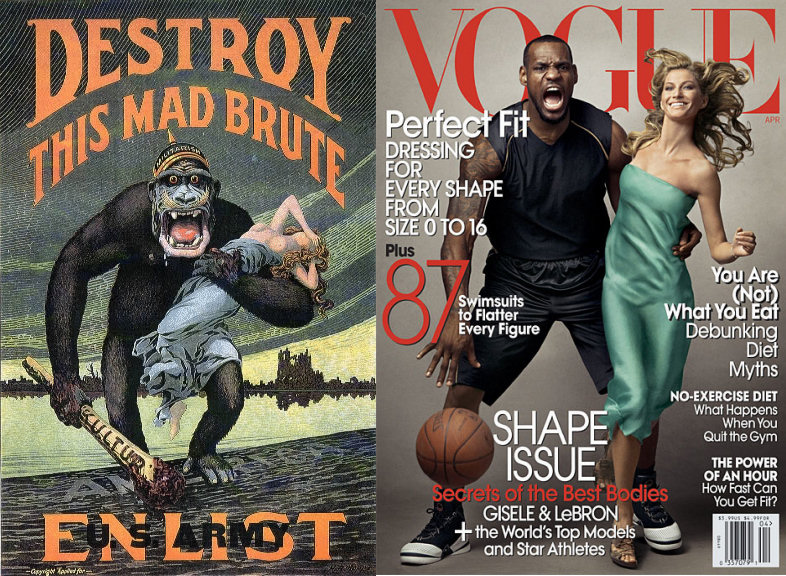
Everything but the helmet: LeBron James meets his doppelganger
“Vogue spokesman Patrick O’Connell said the magazine ‘sought to celebrate two superstars at the top of their game’ for the magazine’s annual issue devoted to size and shape.
“‘We think Lebron James and Gisele Bundchen look beautiful together and we are honoured to have them on the cover,’ he said.”
“But magazine analyst Samir Husni believes the photo was deliberately provocative, adding that it ‘screams King Kong.” Considering Vogue’s influential history, he said, covers are not something that the magazine does in a rush.
“‘So when you have a cover that reminds people of King Kong and brings those stereotypes to the front, Black man wanting white woman, it’s not innocent,’ he said.”
—“Vogue cover starring LeBron James is called racially insensitive by some,” Megan Scott, The Associated Press
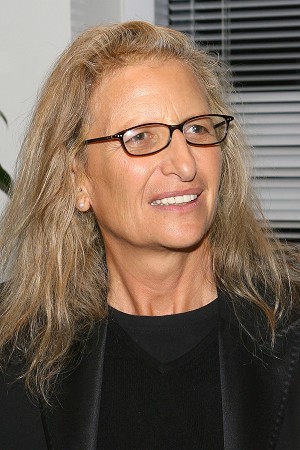 “Lying,” photographer Annie Leibovitz’s late lover, Susan Sontag, famously said in an essay, “is an elementary means of self-defense.”
“Lying,” photographer Annie Leibovitz’s late lover, Susan Sontag, famously said in an essay, “is an elementary means of self-defense.”
Perhaps knowing this is why both Leibovitz, right, creator of VOGUE’s controversial April 2008 cover photo, above right, and Anna Wintour, VOGUE editor-in-chief, below, both 58, have remained absolutely mute since accusations began to fly, over a week ago, that their coy image—featuring Cleveland Cavaliers point forward LeBron James, 23, and supermodel Gisele Bündchen, 27—was a less-than-subtle piece of racist indoctrination.
Continue reading →
March 27th, 2008 — Controversy, Design, Entertainment, Magazines, Media, Race
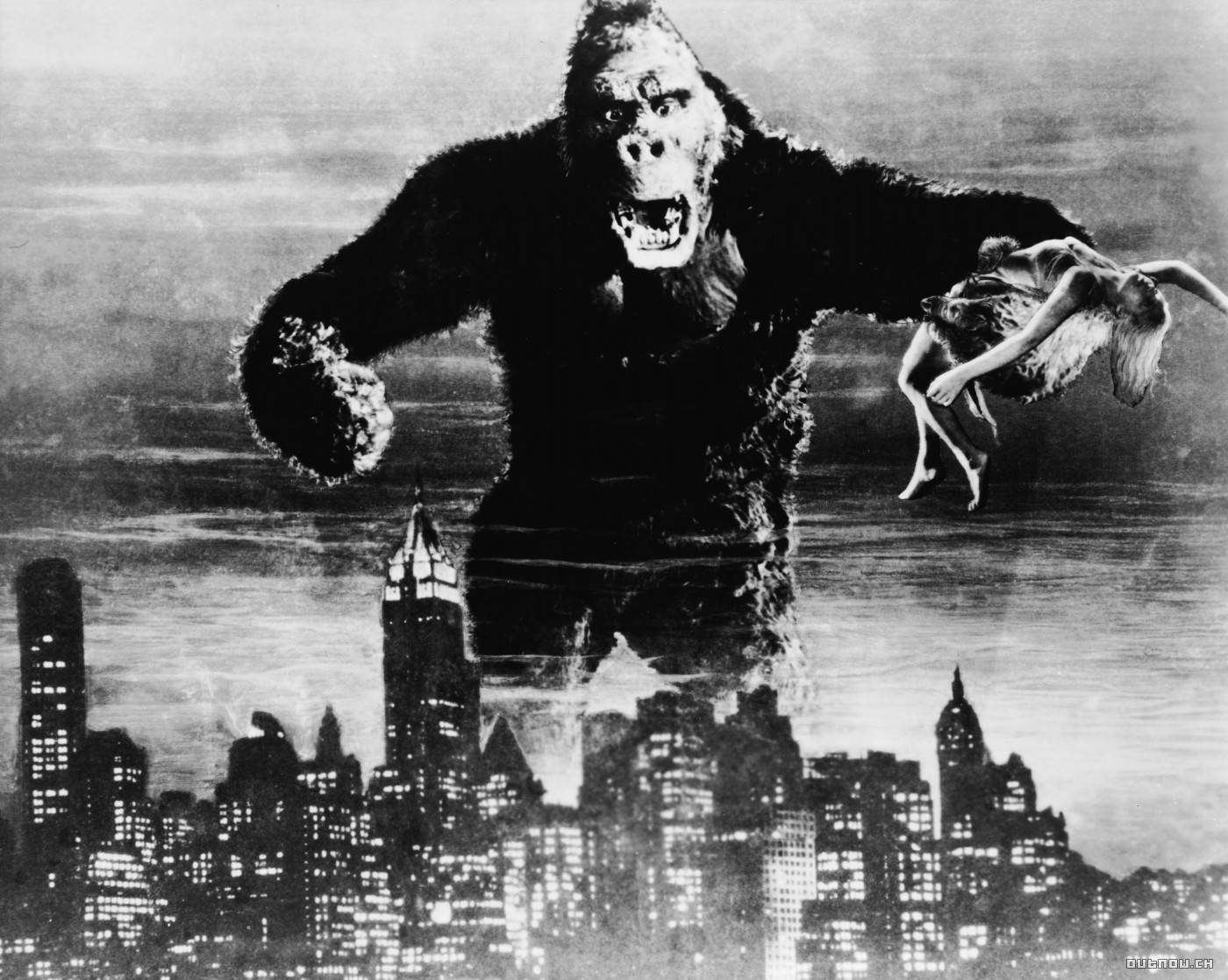
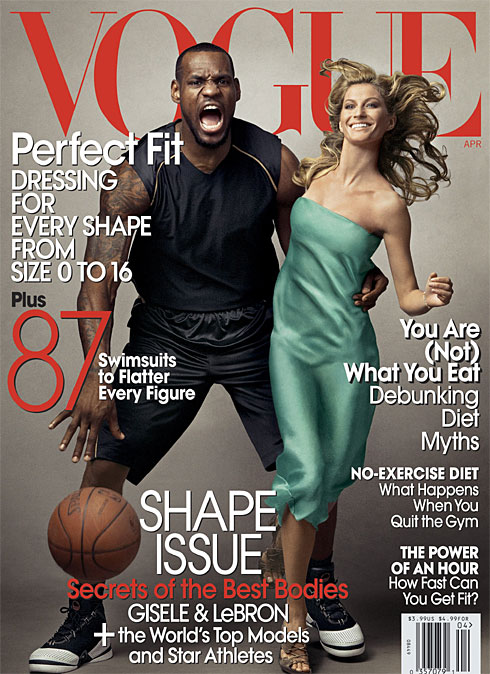 Exactly one week ago, I ran a photo of the current LeBron James/Gisele Bündchen VOGUE cover, right, and noted, upon seeing it, “my first raw thought was that James looked bestial. They look like King Kong and Fay Wray.” (This, in the context of my reporting on a recent study that found many Americans subconsciously associate Black people with apes.)
Exactly one week ago, I ran a photo of the current LeBron James/Gisele Bündchen VOGUE cover, right, and noted, upon seeing it, “my first raw thought was that James looked bestial. They look like King Kong and Fay Wray.” (This, in the context of my reporting on a recent study that found many Americans subconsciously associate Black people with apes.)
I then asked, “Is it just me? Am I just imagining this?”
Apparently not. According to this Associated Press piece (thanks, Ray Winbush) titled, “Vogue cover starring LeBron James is called racially insensitive by some”:
the image is stirring up controversy, with some commentators decrying the photo as perpetuating racial stereotypes. James strikes what some see as a gorilla-like pose, baring his teeth, with one hand dribbling a ball and the other around Bundchen’s tiny waist.
It’s an image some have likened to “King Kong” and Fay Wray.
Continue reading →
March 20th, 2008 — Culture, Magazines, Media, Race

For weeks, I’ve been trying to get the word out on an underreported paper by psychologists at Stanford, Pennsylvania State University and the University of California-Berkeley: According to these researchers, many Americans subconsciously associate Black people with apes.
In addition, the findings show that society is more likely to condone violence against Black criminal suspects as a result of its broader inability to accept African Americans as fully human, according to the researchers.
Those findings, researched over a six-year period, were printed February 7 in the Journal of Personality and Social Psychology, published by the American Psychological Association.
Co-author Jennifer Eberhardt, a Stanford associate professor of psychology who is Black, said she was shocked by the results, particularly since they involved subjects born after Jim Crow and the civil rights movement. “This was actually some of the most depressing work I have done,” she said. “This shook me up. You have suspicions when you do the work—intuitions—you have a hunch. But it was hard to prepare for how strong [the Black-ape association] was—how we were able to pick it up every time.”
When colleague Ray Winbush forwarded me the LeBron James/Gisele Bündchen VOGUE cover, above, my first raw thought was that James looked bestial. They look like King Kong and Fay Wray. Is it just me? Am I just imagining this?
March 5th, 2008 — Crime, Magazines, Race
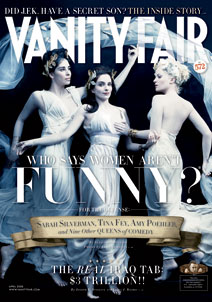 Yesterday, I wrote about my respect-recoil relationship with Vanity Fair magazine, as I felt “love-hate” was too flat to shade the nuances of my feelings about the publication. As I said then, what I detest is its racial myopia; a close focus on stories by, and about, white people. This is something basic to American media, “normal,” in certain ways, but increasingly glaring, for many reasons, at this magazine.
Yesterday, I wrote about my respect-recoil relationship with Vanity Fair magazine, as I felt “love-hate” was too flat to shade the nuances of my feelings about the publication. As I said then, what I detest is its racial myopia; a close focus on stories by, and about, white people. This is something basic to American media, “normal,” in certain ways, but increasingly glaring, for many reasons, at this magazine.
So what do I respect about Vanity Fair?
As a writer whose career has mostly been built around writing for magazines, I’m always struck by the editorial heft of Conde Nast pubs; the way good editing and design works to create an almost tactile reading experience.
I’ve said “of Conde Nast publications,” so this is their corporate quality, but Vanity Fair is the flagship. At the magazine, their features are practically oaken with the quality that substantial resources and vision can buy a publication. The writing is not only top-notch but standard-bearing; the photography is legendary. Typically, when I buy a Vanity Fair, I don’t even rush to read it. I know that the articles typically take a long view that will make good study a month, or three, or six, or a year later.
Last year, before blog—this past August, precisely—Vanity Fair ran big pieces on musical revolutionary Sly Stone and The Simpsons, both of which got covered elsewhere. (In fact, in the October issue, with the Nicole Kidman cover, VF posted a Simpsons letter-to-the-editor by this writer.)
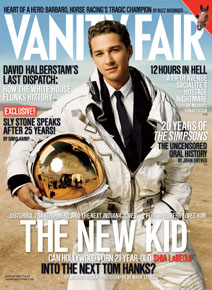 Continue reading →
Continue reading →
March 4th, 2008 — Magazines, Media, Pop Culture, Race

To say I have a love-hate relationship with Vanity Fair would be sort of putting it baldly, and imprecisely. It’s more of a respect-recoil connection that we share.
What do I respect, and from what do I recoil?
Well, I don’t want to rush this, so what I’ll do is take each aspect one at a time, over the course of today and tomorrow, saving the best for last.
What makes me recoil from Vanity Fair is that the magazine, based on both its content and writing staff, seems to tightly embrace a dated form of racial near-sightedness. I call it anachronistic achromatism. It’s a magazine, Sly Stone be damned, about white people, for white people, and, especially, by white people. This is the norm in American media, but VF makes a deference to whiteness that seems, on this small, brown, post-9/11 planet, not just brazenly out-of-touch, but, even more, recklessly hopeful.
Continue reading →

 “Lying,” photographer Annie Leibovitz’s late lover, Susan Sontag, famously said in an essay, “is an elementary means of self-defense.”
“Lying,” photographer Annie Leibovitz’s late lover, Susan Sontag, famously said in an essay, “is an elementary means of self-defense.”

 Yesterday, I wrote about my respect-recoil relationship with Vanity Fair magazine, as I felt “love-hate” was too flat to shade the nuances of my feelings about the publication. As I said then, what I detest is its racial myopia; a close focus on stories by, and about, white people. This is something basic to American media, “normal,” in certain ways, but increasingly glaring, for many reasons, at this magazine.
Yesterday, I wrote about my respect-recoil relationship with Vanity Fair magazine, as I felt “love-hate” was too flat to shade the nuances of my feelings about the publication. As I said then, what I detest is its racial myopia; a close focus on stories by, and about, white people. This is something basic to American media, “normal,” in certain ways, but increasingly glaring, for many reasons, at this magazine.

